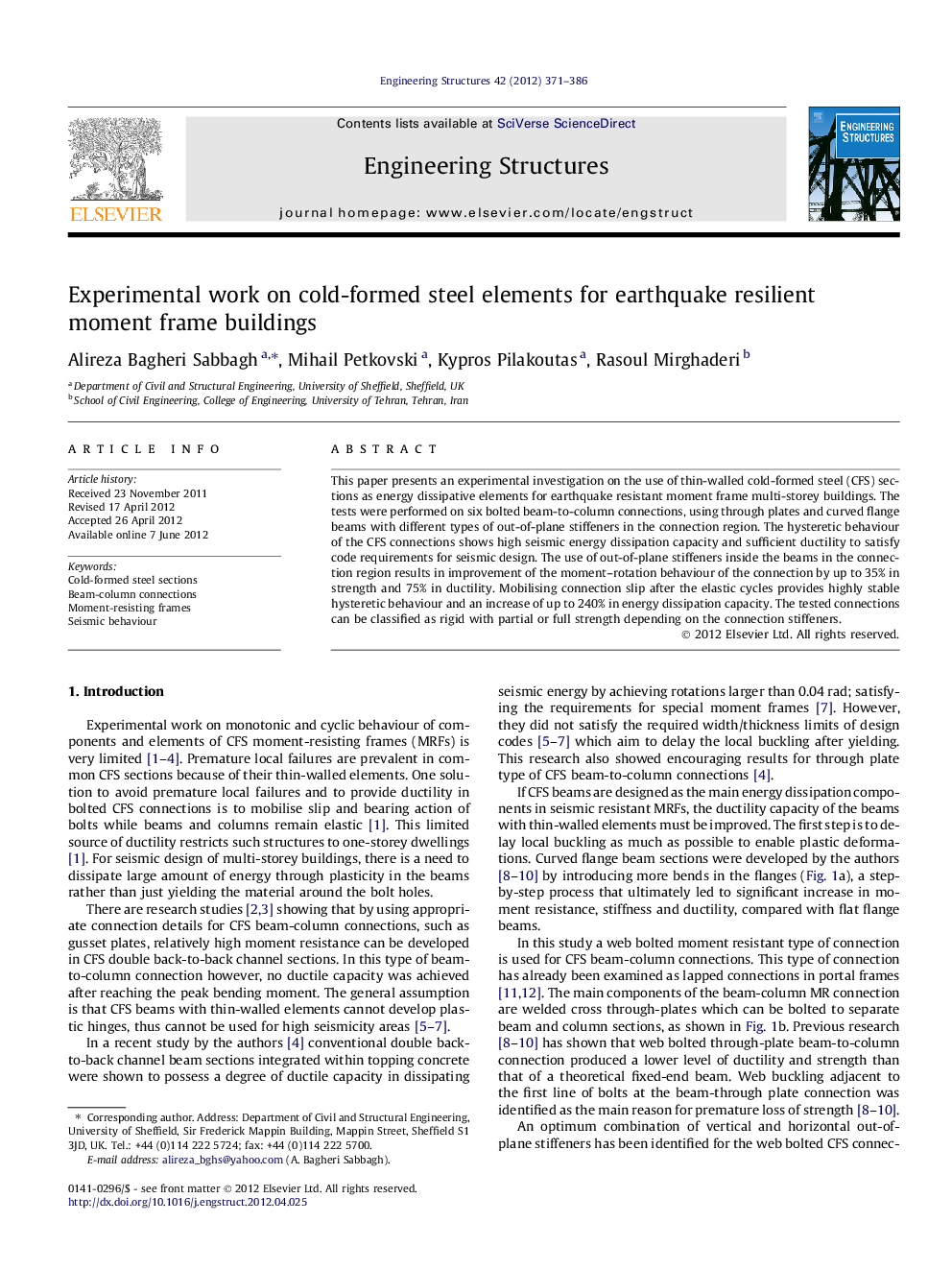| Article ID | Journal | Published Year | Pages | File Type |
|---|---|---|---|---|
| 267467 | Engineering Structures | 2012 | 16 Pages |
This paper presents an experimental investigation on the use of thin-walled cold-formed steel (CFS) sections as energy dissipative elements for earthquake resistant moment frame multi-storey buildings. The tests were performed on six bolted beam-to-column connections, using through plates and curved flange beams with different types of out-of-plane stiffeners in the connection region. The hysteretic behaviour of the CFS connections shows high seismic energy dissipation capacity and sufficient ductility to satisfy code requirements for seismic design. The use of out-of-plane stiffeners inside the beams in the connection region results in improvement of the moment–rotation behaviour of the connection by up to 35% in strength and 75% in ductility. Mobilising connection slip after the elastic cycles provides highly stable hysteretic behaviour and an increase of up to 240% in energy dissipation capacity. The tested connections can be classified as rigid with partial or full strength depending on the connection stiffeners.
► Experimental study on cyclic behaviour of new CFS moment connections are presented. ► Through plates and curved flange beams were the main connection elements. ► CFS curved flange beams can sustain the moment capacity at large rotations. ► Out-of-plane stiffeners inside the beams improve the moment–rotation behaviour. ► Connection slip after elastic cycles leads to highly stable hysteretic behaviour.
